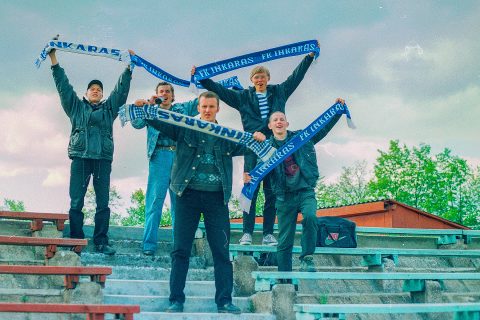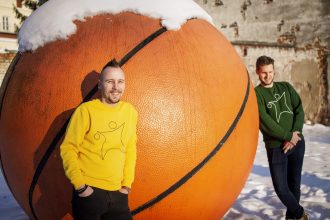No one can dispute the fact that Kaunas has deep basketball traditions that many are proud of. When looking for ways to convey this history and this feeling, a few years ago it was decided to build a Lithuanian House of Basketball in Kaunas.
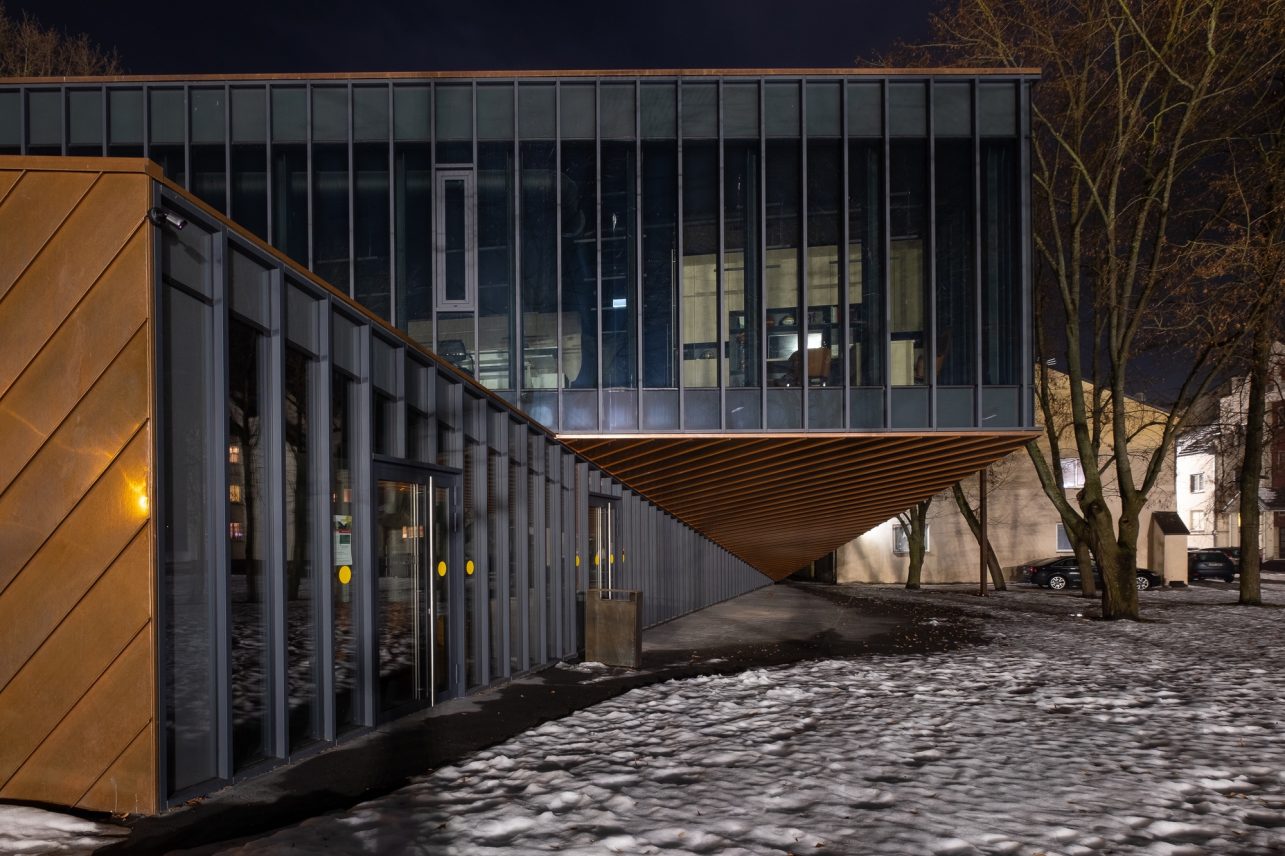
Today, on Santakos St. 11 we already have a building that will accommodate the Lithuanian Basketball Federation, conference and event spaces as well as a museum and a cafe. Although the building has already started functioning, we will have to wait for the exposition to open. The museum will welcome visitors in 2022. However, the premiere of the Infinity performance by Kaunas Dance Theatre Aura has already taken place in the House of Basketball, and at the end of 2021 the 13th Kaunas Biennial will take place here. So, let’s talk about the House of Basketball: from architecture to dance, from sports to art.
The new House of basketball is located in an exclusive spot where the urban Old Town environment meets the natural Santaka Park. The difficult task of sensing and then responding to the diverse environment, the importance of basketball to Lithuania, and Kaunas residents’ love for this sport with architectural forms went to the architecture firm G. Natkevičius ir partneriai (architects Lukas Lebednykas, Adomas Rimšelis, Gintautas Natkevičius). The architects paid a lot of attention to the plastic facade. They chose a sculptural form that looks different from different points of view, including the bird’s eye view. The uneven shape of the building was also determined by desire to preserve as many significant elements found on the plot as possible. The century-old oak growing in the center of the territory has become one of the main highlights. It may sound naive, but we immediately had a symbolic association that Lithuanian basketball players are like our oaks. Therefore, the facade part of the entrance and the main exhibition halls surround the tree growing there, it becomes the axis of the building and the story that is being told,” G. Natkevičius explained the idea.
The entire facade of the House of Basketball is made of aluminum constructions with glass and copper plates. The use of many large windows was determined by the architects’ desire to achieve the impression of transparency, to allow visitors to see the surrounding environment through the windows: the Nemunas, of the Old Town streets and for those who are looking in from the outside, to reveal what lies in the House of Basketball. Copper was chosen because it oxidizes over time, matures, transforms from shiny to dark brown, which goes well with the landscape of the old town. In addition, this material is strong and water-resistant, so it should last a long time.
Speaking about the need for the House of Basketball, G. Natkevičius shared the insight that although the first task of the restored state was to take care of the basic physical needs of the population, today they are well fulfilled. You can buy various types of food in shops, we are free to travel, and have our streets and sidewalks fixed. “The state has already entered the next stage of development and we need to find ways to tend to the city not only at the level of primary human instincts, but also in terms of culture development, and educating the younger generation. I think that the House of Basketball is an expression of this next step,” the architect explained. G. Natkevičius was glad that cultural projects are not concentrated only in Vilnius. According to one of the creators of this project, it is important for small cities to also have character and the opportunity to develop it, and Kaunas is a great example of the fact that second cities have a chance to do better than capitals, not by competing but by showing that we all can.
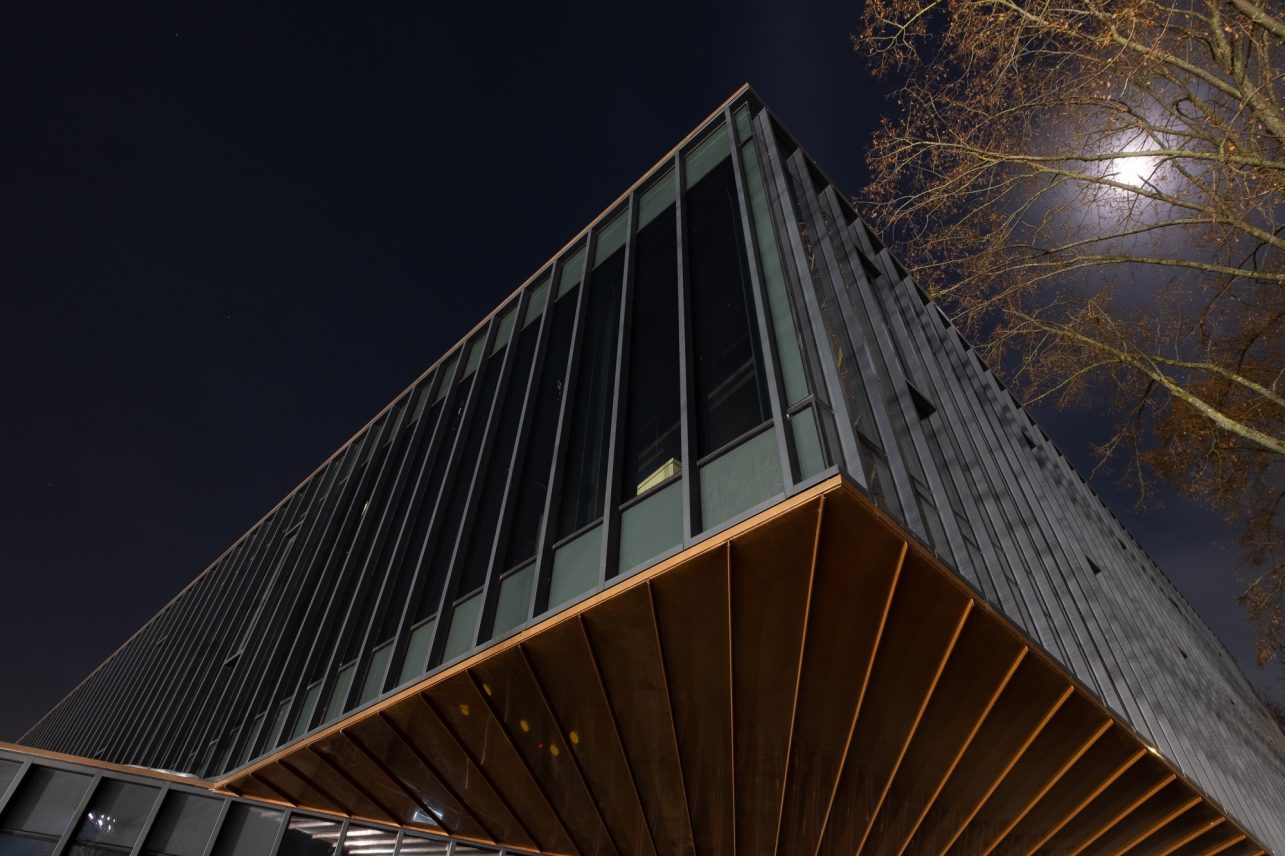
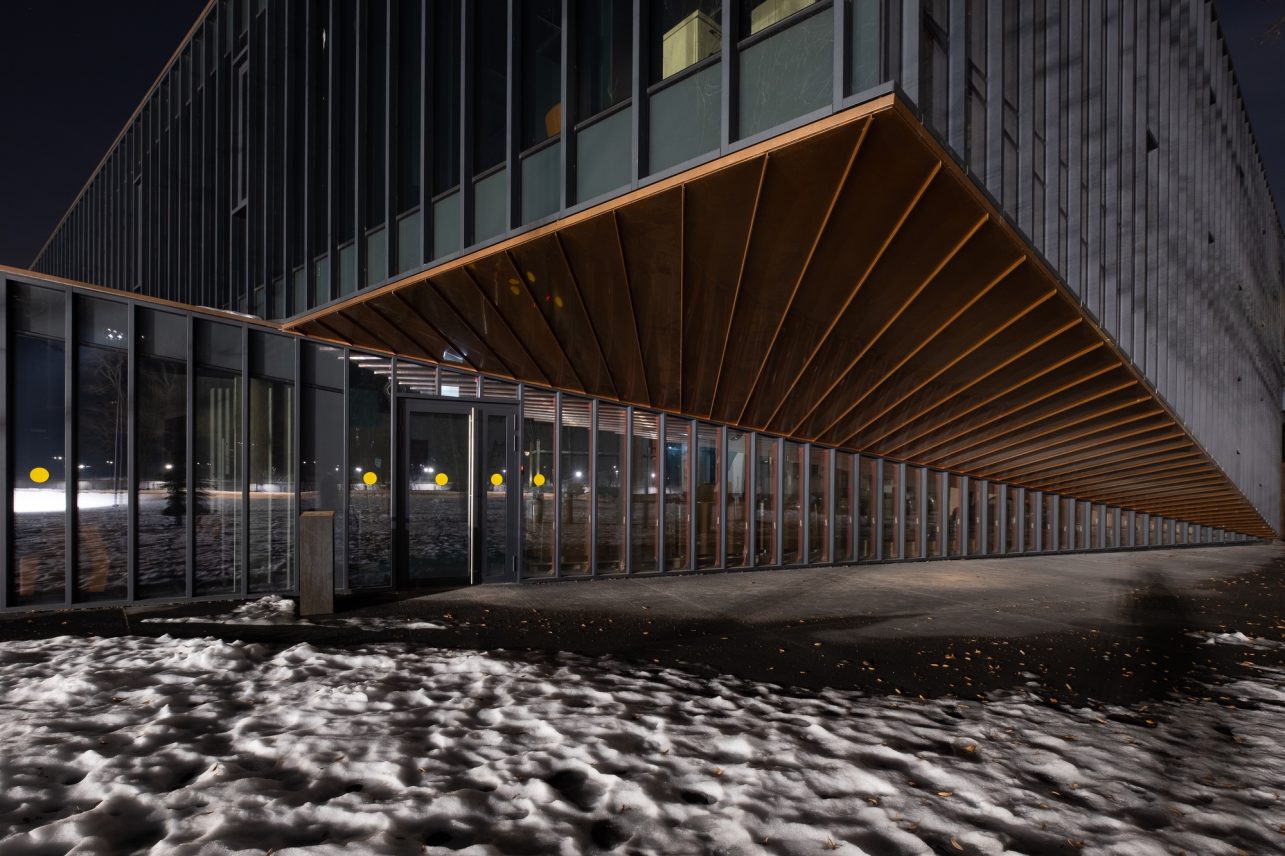
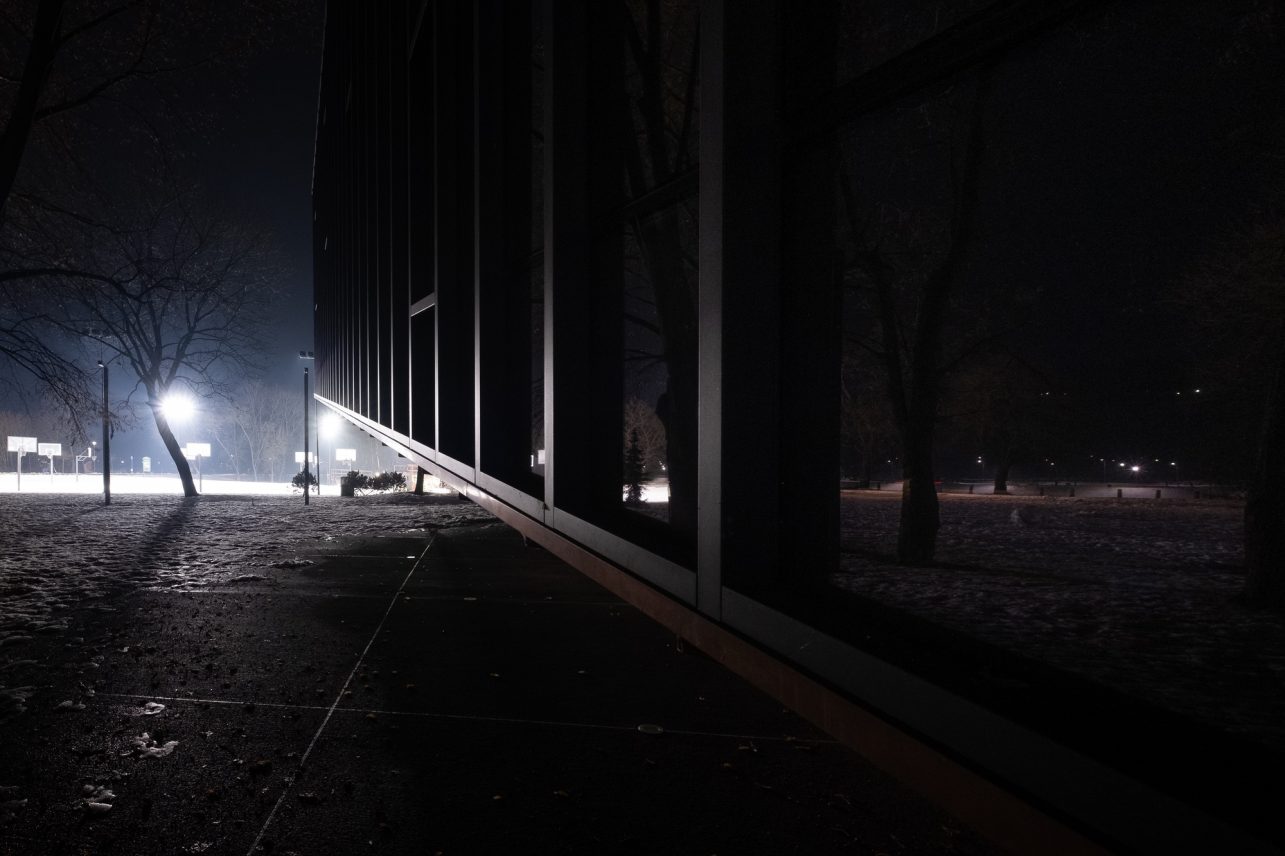
A place dedicated to the love of basketball
“In 2022, Lithuanian basketball will celebrate its centenary, and on that occasion, the development of the House of Basketball was started. A modern museum dedicated to giving meaning to and nurturing the history of this sport, our most famous victories, the most memorable moments, and the most deserving personalities that significantly contributed to basketball development in Lithuania.” Živilė Belejevaitė, the director of the House of Basketball, told us about the new museum. The House of Basketball exposition project is created by the American creative company RAA, which has worked with various museums in different countries. It is planned that the visitors will be able to see a traditional exhibition of various basketball relics, including the trophies of Lithuania’s greatest victories (1937, 1939, 1997, and 2003), as well as interactive zones that – with the help of smart technology – will allow you to actively experience the history of basketball on a 360 degree angle, interact with sports legends and test your strength. A symbolic court will appear outside, with special tiles that will immortalize a hundred Lithuanian basketball stars.
Although the main focus of the institution, of course, lies on the activities of the modern basketball museum, Ž. Belejevaitė assures that the House of Basketball will remain open to various projects even after the setting up of expositions. “Our facilities are suitable for different activities. If necessary, the first floor can turn from the exhibition hall into a conference hall for seminars, an open space for temporary exhibitions or concerts, it all depends on the needs of the event organizers,” the director of the institution explained. The future plans of the House of Basketball also include children’s camps and an e-sports school. “We want and strive to be open, so we do not limit ourselves to museum activities. We are inclined to cooperate to find the best solutions for project implementation,” Ž. Belejevaitė listed the principles of the institution.
Doors open to cultural initiatives
The premiere of the Infinity performance was held during the opening of the last year’s Aura 30 International Dance Festival. Finding a suitable hall for the first joint performance of Kaunas City Symphony Orchestra and Kaunas Aura Dance Theatre turned out to be a considerable challenge. It required spaces that would accommodate over 40 musicians, 11 dancers, a conductor, and more than 200 spectators. The challenge of welcoming a significant number of people has been entrusted to the House of Basketball. The head of the dance theater Birutė Letukaitė remembers that in accordance with the safety requirements it was necessary to leave spaces between the spectators, therefore it was not easy to accommodate all dance enthusiasts and performers even on two floors, but finally, they succeeded. “Wealthy are those who have their own stage, but this city has many freelance artists, musicians, troupes, and other creators, who do not have their own facilities. Kaunas desperately needs a new independent concert/theater hall, which could accommodate about 400-500 viewers and a large stage,” the choreographer said. B. Letukaitė agrees that at least for the time being, this emptiness could be filled by the new House of Basketball, the space of which has already been tested by the dance theater. According to the head of Aura, it is important that the institution is ready to take various initiatives and is ready to transform the halls if necessary – to install elevations, lighting, and sound equipment.
At the end of this year, Kaunas Biennial will settle at the House of Basketball: an international exhibition will be set up here. “The main theme of the 13th Kaunas Biennial is related to survival stories and the resilience of humanity. That is what we want to share with the visitors, to show that the various personal and communal experiences, of which we have plenty in our history, including the current quarantine, connect us with countries as far away as Brazil or closer as Kosovo or Belarus and nations such as the Inuit, who are native to northern Canada. The main exhibition of the 13th Kaunas Biennial will be presented at the House of Basketball and it is in this space that we will show works of art on the topic of survival. The main goal of the exhibition is to show that what links Kaunas to other parts of the world is nothing else but common human experience. Thinking about it, we try to find a space that would respond to this idea, and sports – especially basketball – perfectly reflect the spirit of collective experience,” Neringa Kulik, the director of Kaunas Biennial, said.
Both art and basketball traditions are important parts of the cultural identity of Kaunas city, therefore there is an increasing desire to discover their mutual connections, thus fostering both areas. “You could say that they are two universal languages allowing us to make a connection and communicate all around the world, regardless of borders, languages, generations, and cultural differences. If we look at sport and art as opportunities for creativity, imagination, and personal expression, we will also see clear links between them. This allows us to create a platform for mutual understanding, discussions, and exchange of ideas,” the head of Kaunas Biennial listed the advantages of interdisciplinary cooperation.
According to the curator, the openness of the House of Basketball to cultural initiatives is commendable also because such an approach helps to address not only the lack of space but also the challenges of audience development. Cooperation between cultural, business, and educational institutions is beneficial to all the parties and easily implementable in such a small city like Kaunas. “We know each other well and I believe that by joining forces we can achieve more than acting alone,” N. Kulik said.

